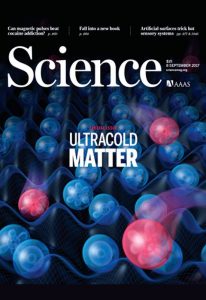 Luca Rossi tried to hang himself in a bedroom in Perugia, Italy, in 2012. He had everything to live for, but he was addicted to crack cocaine. He had begun his habit not long after medical school, confidently assuming that he could control the drug. Now, it owned him.
Luca Rossi tried to hang himself in a bedroom in Perugia, Italy, in 2012. He had everything to live for, but he was addicted to crack cocaine. He had begun his habit not long after medical school, confidently assuming that he could control the drug. Now, it owned him.
In April 2013, Rossi’s father, found a work of Antonello Bonci and Billy Chen (National Institute on Drug Abuse – NIDA). They suggested that targeted stimulation of a specific region in the human brain—an area in the prefrontal cortex—could help compulsive cocaine users. Bonci explained that transcranial magnetic stimulation (TMS), a noninvasive method of triggering neural activity, might do the job.TMS isn’t new to medicine; it is already an approved therapy for depression. But in applying the treatment to drug addiction, investigators are moving aaa swiss replica rolex datejust 69163 white roman 26mm two tone oyster diamond bezel watch 69173 into new territory. “Imagine that this does become the first approved neurobiological treatment for cocaine addiction. It’s a big deal, a game-changing therapy,” Bonci says.
Rossi’s father began a frenetic quest for help that led him to Luigi Gallimberti, a prominent Italian addiction physician. He had treated people with cocaine dependance for 20 years. He’s attempts to help users with psychotherapy, medications, and residential treatment had been difficult and frustrating. “Cocaine addiction is a disease of brain circuits,” he says. “But not one of the approaches we were using corrected those circuits.”
Within 4 months of learning of the Nature article, Gallimberti had bought a TMS device, trained himself and his staff to use it.
Gallimberti and his colleague, psychologist Alberto Terraneo, soon began enrolling patients in a nonblinded treatment study. The clinicians treated a group of 16 cocaine users with high-frequency rTMS stimulation meanwhile an equal number of cocaine-using subjects in a control group received medication. During the 29-day study, the treatment group reported significantly less craving and produced significantly more cocaine-free urine tests Modyfikacje e papierosy than the controls, as the researchers, including NIDA’s Bonci, reported last December in European Neuropsychopharmacology.
After the initial study, Gallimberti began offering the treatment in his clinic; he and his colleagues have now treated more than 300 addicted people.To Terraneo, rTMS’s effect on cocaine users is simple and clear: “It’s as if they lose the memory of the pleasure.”
sigaretta elettronica kiwi colori
